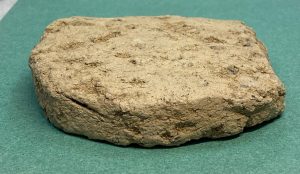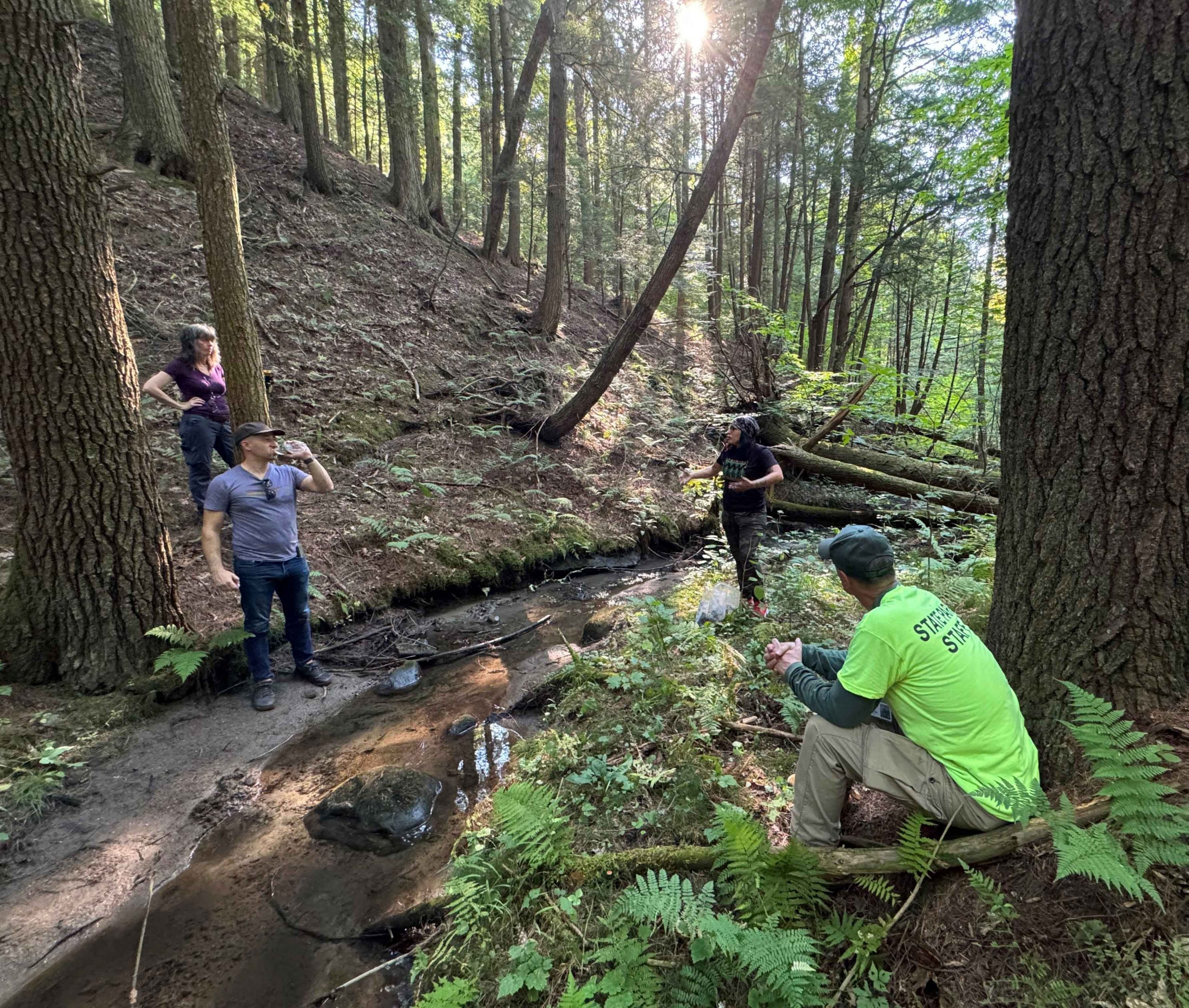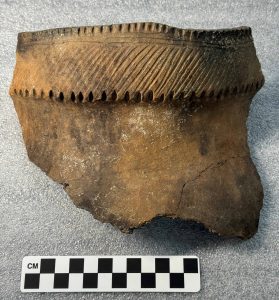
A rare, tempered clay slab found at Garoga was shaped and prepared for pottery making.
Photo: Jonathan Lothrop
The Kanien’keha:ka (Mohawk) Garoga site, a Conservancy acquisition in 2015, is the subject of an important research project initiated by the New York State Museum to examine Haudenosaunee (Iroquois) ceramic technology and pottery-making traditions. The site is a large, palisaded village that contained 13 longhouses and was occupied from 1550 to 1580. Most of what is known about the site is the result of three field seasons of investigation conducted by the New York State Museum in the 1960s. These excavations produced an assemblage of more than 12,000 objects, now curated at the museum, that include thousands of decorated pottery sherds and other artifacts indicative of the pottery-making process.
The Haudenosaunee, which consists of the Seneca, Oneida, Onondaga, Cayuga, Mohawk, and later the Tuscarora Nations, are famous for their pottery. In the 16th century, they produced thin-walled, finely tempered pots of various sizes with well-defined collars decorated with incised geometric patterns. The Haudenosaunee used pots for cooking and storage in every village, and skilled potters routinely produced pottery of exceptional quality. In the museum’s collections from the Garoga site there are numerous artifacts associated with pottery production including raw clay nodules, a rare tempered clay slab stored for future pottery making, hornblende and feldspar stone ready to be ground and used for temper, and tools for smoothing and decorating pottery.

Untempered, raw clay nodules were recovered from storage pits at the Garoga site.
Photo: Jonathan Lothrop
A collaborative study is underway that includes intra-site spatial analysis, petrographic analysis, and experimental replication of Garoga site pottery by award-winning Kanien’keha:ka potter Natasha Smoke Santiago. The petrographic work includes thin-section analysis of raw clays collected from sources near the site, clay nodules recovered from storage pits at the site, and Garoga site pottery. The replications constructed by Smoke Santiago will use raw clay collected from the same sources that were probably utilized by Garoga potters. The primary goal is to reconstruct the Kanien’kehà:ka pottery-making process through archaeological analysis, experimentation, and replication, informed by Kanien’kehà:ka craft traditions.
For this research, the museum appreciates the support of The Archaeological Conservancy and its Eastern Regional Director Kelley Berliner. This project is generously supported by grant funding from the Charles Touhey Foundation. Permission for this research has been granted by the Saint Regis Mohawk Tribal Preservation Office and Tribal Historic Preservation Officer Darren Bonaparte.





